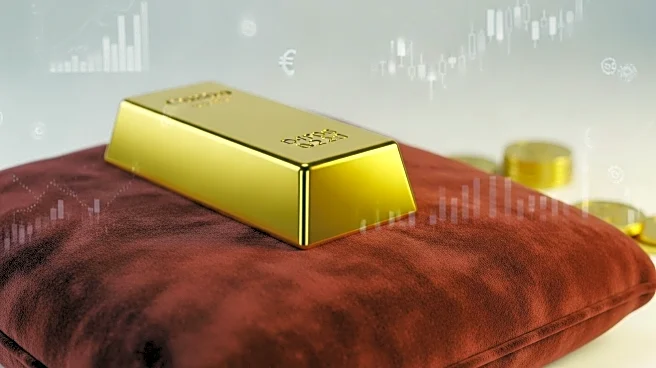What's Happening?
Gold has reached a new milestone, breaking through the $4,000 level, as investors seek safe-haven assets amid geopolitical tensions and a depreciating dollar. The precious metal's rally has been fueled by central banks and retail buyers, who have increased their holdings in response to lower interest rate expectations. Christopher Cruden, a fund manager with a strategy that combines FX and commodities trading, cautions that the current surge may not be sustainable. He notes that gold prices have historically experienced significant declines after reaching all-time highs. Cruden's investment strategy profits from both increases and decreases in gold prices, but struggles in trendless markets. Jonathan Unwin from Mirabaud Wealth Management also warns that the current price surge may lead to profit-taking, potentially causing a pull-back before prices resume their upward trend.
Why It's Important?
The surge in gold prices highlights the ongoing uncertainty in global markets, as investors seek assets that can provide stability during economic and geopolitical turmoil. Gold's appeal as a relatively uncorrelated asset class makes it attractive to investors looking to diversify their portfolios. However, the potential for a pull-back in prices could impact those who have heavily invested in gold as a hedge against other market risks. Central banks, particularly in China, have been significant buyers of gold, indicating a shift away from dollar-centric reserves. This trend underscores the geopolitical implications of gold as a reserve asset, especially in light of recent sanctions against Russia.
What's Next?
Investors and fund managers are closely monitoring gold's price movements, anticipating potential profit-taking as the $4,000 milestone is reached. A pull-back in prices could occur before a possible resumption of the upward trend. The ongoing demand for gold by central banks suggests that the metal will continue to play a crucial role in global reserve portfolios. As geopolitical tensions and economic uncertainties persist, gold's status as a safe-haven asset is likely to remain strong, influencing investment strategies and market dynamics.
Beyond the Headlines
The current dynamics in the gold market reflect broader shifts in global economic and geopolitical landscapes. The increased interest in gold by central banks highlights concerns over the stability of dollar-centric reserves and the desire for assets with neutral status. This trend may lead to long-term changes in how countries manage their reserve portfolios, potentially impacting international financial systems and currency valuations.











